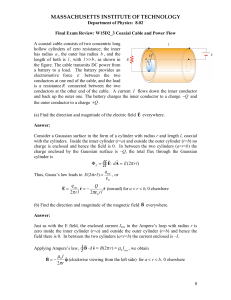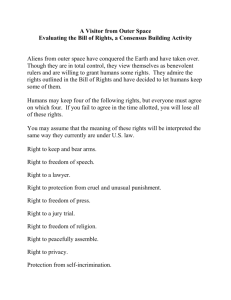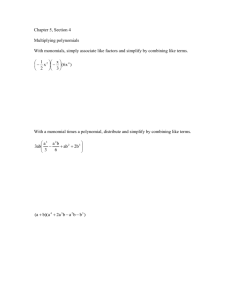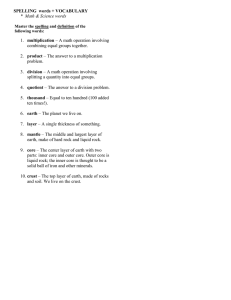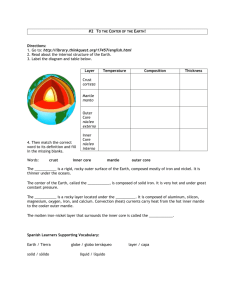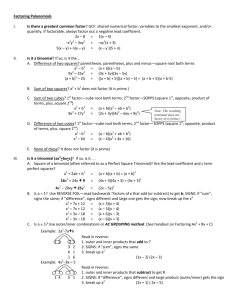Rolling Cylinders Race Down an Inclined Plane—C.E. Mungan, Fall 2013
advertisement
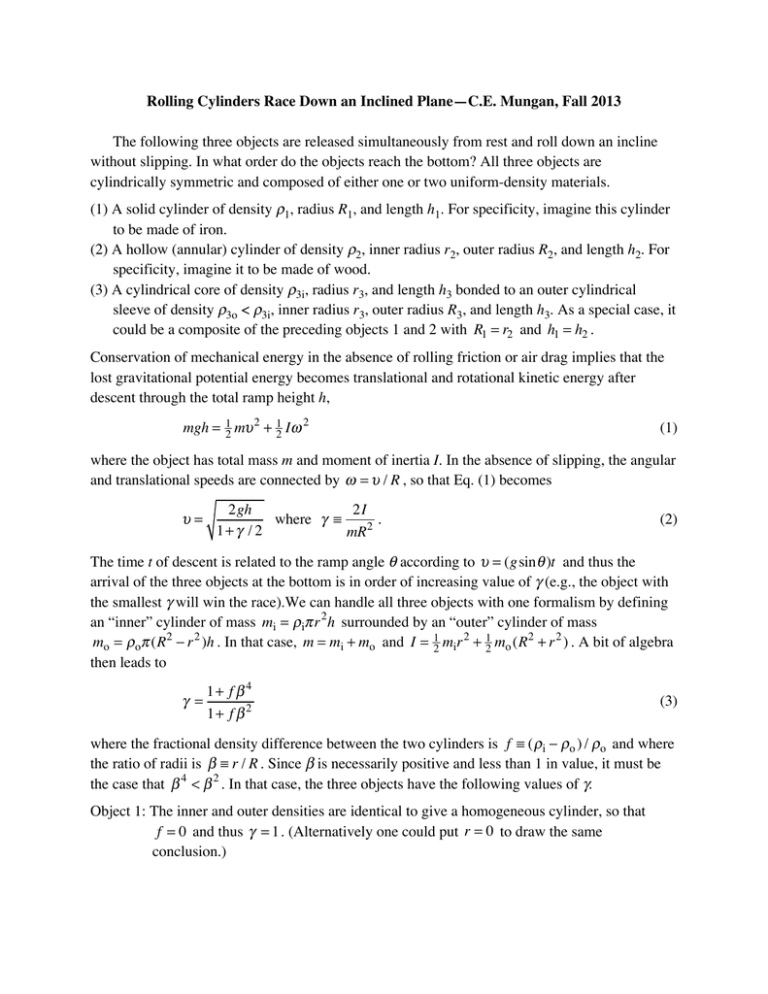
Rolling Cylinders Race Down an Inclined Plane—C.E. Mungan, Fall 2013 The following three objects are released simultaneously from rest and roll down an incline without slipping. In what order do the objects reach the bottom? All three objects are cylindrically symmetric and composed of either one or two uniform-density materials. (1) A solid cylinder of density ρ1, radius R1, and length h1. For specificity, imagine this cylinder to be made of iron. (2) A hollow (annular) cylinder of density ρ2, inner radius r2, outer radius R2, and length h2. For specificity, imagine it to be made of wood. (3) A cylindrical core of density ρ3i, radius r3, and length h3 bonded to an outer cylindrical sleeve of density ρ3o < ρ3i, inner radius r3, outer radius R3, and length h3. As a special case, it could be a composite of the preceding objects 1 and 2 with R1 = r2 and h1 = h2 . Conservation of mechanical energy in the absence of rolling friction or air drag implies that the lost gravitational potential energy becomes translational and rotational kinetic energy after descent through the total ramp height h, mgh = 12 m! 2 + 12 I" 2 (1) where the object has total mass m and moment of inertia I. In the absence of slipping, the angular and translational speeds are connected by ! = " / R , so that Eq. (1) becomes != 2I 2gh where ! " . 1+ " / 2 mR 2 (2) The time t of descent is related to the ramp angle θ according to ! = (gsin " )t and thus the arrival of the three objects at the bottom is in order of increasing value of γ (e.g., the object with the smallest γ will win the race).We can handle all three objects with one formalism by defining an “inner” cylinder of mass mi = !i" r 2 h surrounded by an “outer” cylinder of mass mo = !o" (R 2 # r 2 )h . In that case, m = mi + mo and I = 12 mir 2 + 12 mo (R 2 + r 2 ) . A bit of algebra then leads to ! = 1+ f " 4 1+ f " 2 (3) where the fractional density difference between the two cylinders is f ! ( "i # "o ) / "o and where the ratio of radii is ! " r / R . Since β is necessarily positive and less than 1 in value, it must be the case that ! 4 < ! 2 . In that case, the three objects have the following values of γ. Object 1: The inner and outer densities are identical to give a homogeneous cylinder, so that f = 0 and thus ! = 1 . (Alternatively one could put r = 0 to draw the same conclusion.) Object 2: If the inner density is smaller than the outer density (such as if the object is hollow, for which !i = 0 ), then f < 0 and thus ! > 1 because we are then subtracting less in the numerator of Eq. (3) than in the denominator. Object 3: If the inner density is larger than the outer density, then f > 0 and thus ! < 1 . To conclude, object 3 comes in first place, object 1 in second place, and object 2 loses the race. This order of finish depends only on the ratio of the inner and outer densities, regardless of the masses or dimensions of the cylinders. Intuitively, if we compare any object to a single uniform cylinder of the same outer radius and outer density, we simply need to consider whether the inner density is smaller than, equal to, or greater than the outer density. It is left to the reader to consider what happens if for object 3, the inner and outer cylinders are connected by frictionless bearings instead of being bonded together, so that now the inner core does not rotate as the outer sleeve rolls down the incline.

